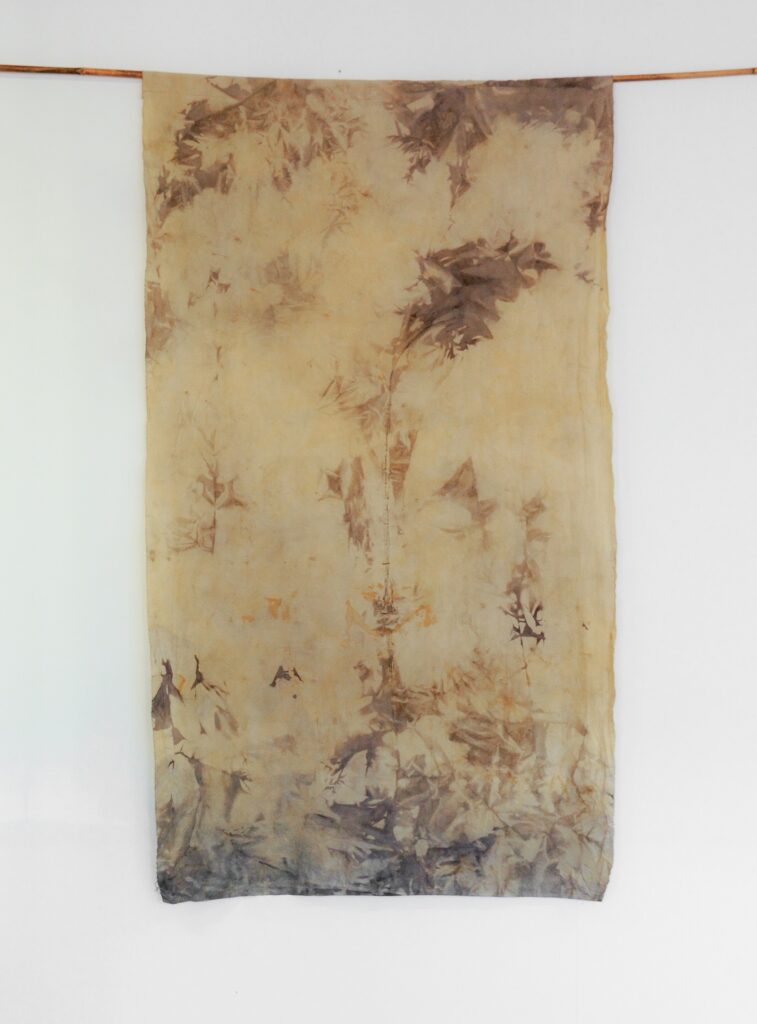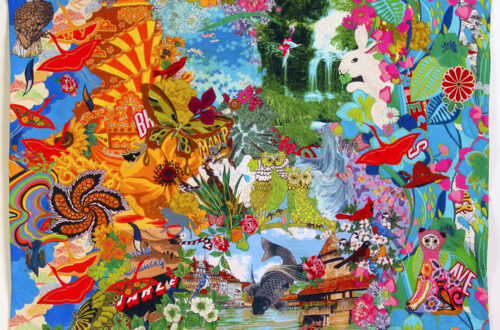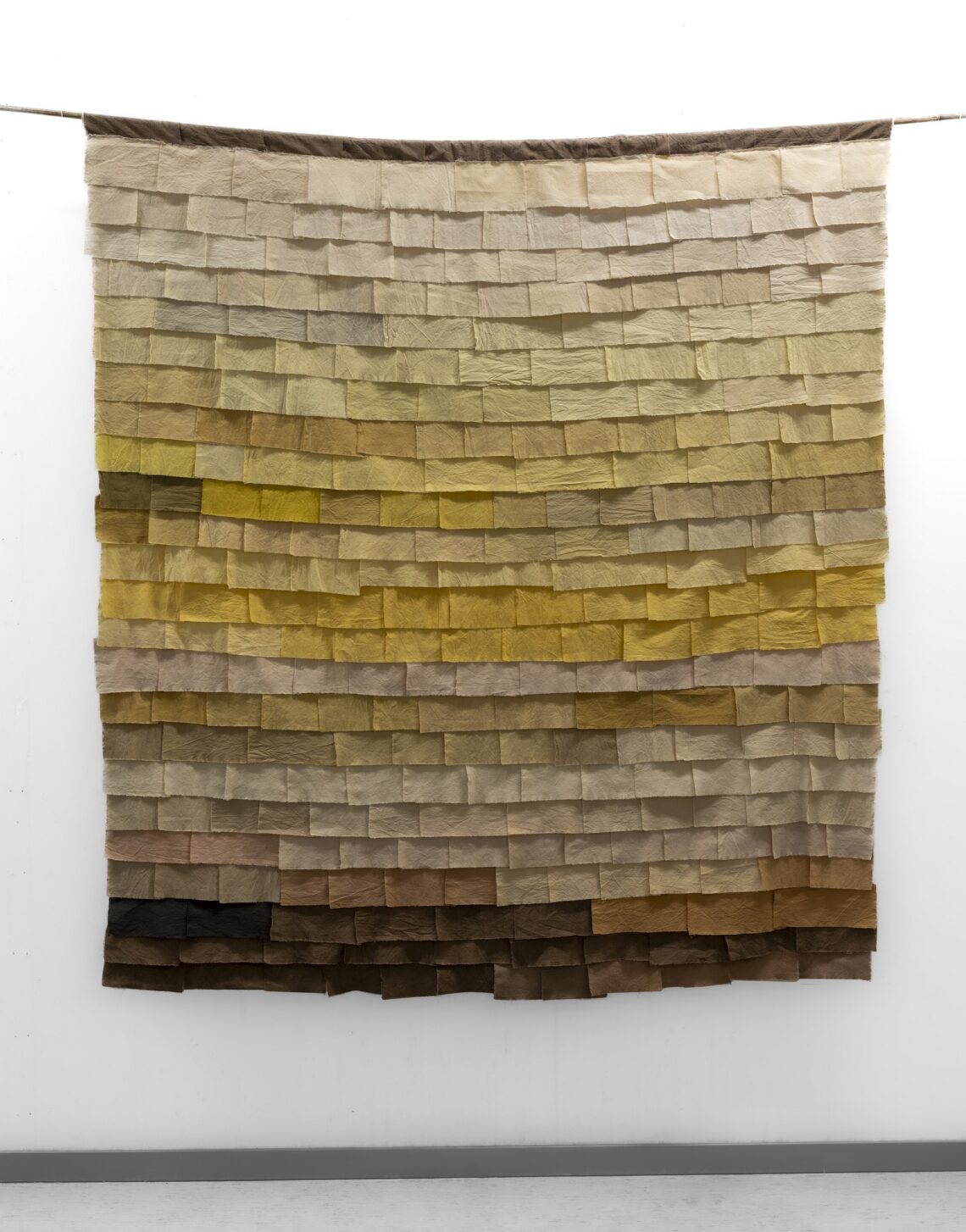
TERESA PUIG – MUTABLE ESSENCE
| by Elena Redaelli |
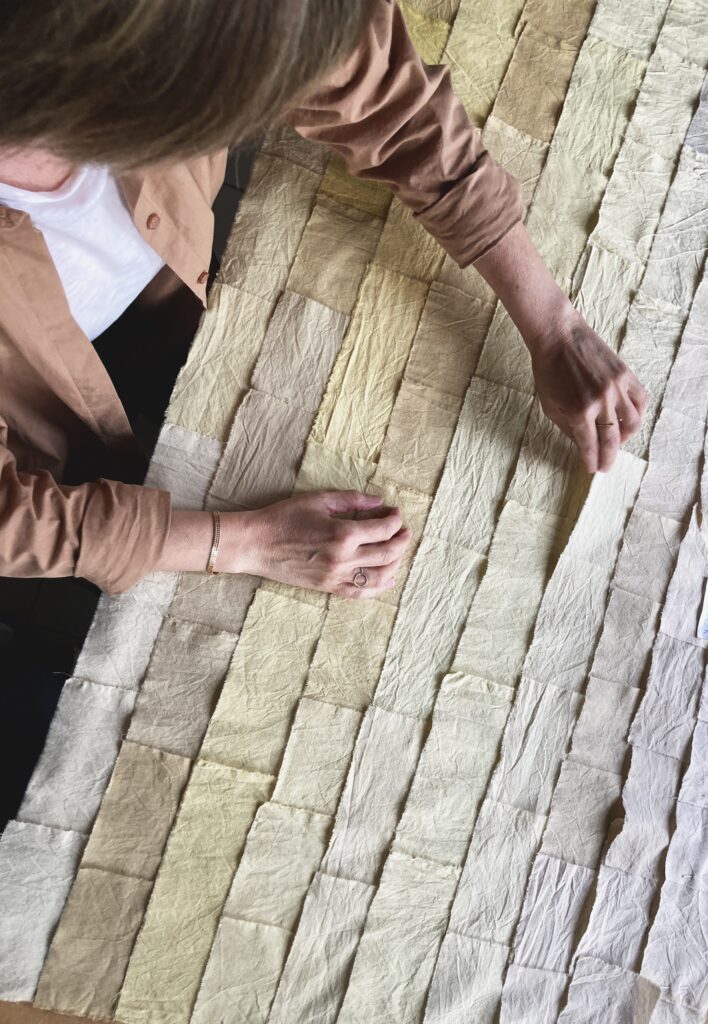
Teresa Puig is a Spanish artist living and working in Norway. Her work is based on a close observation of space; she pays attention to the ephemeral and transitory aspects of the natural world.
She refers to her works as “scenarios,” spatial installations in which she combines projected images, lights, and objects made of paper, threads, textiles, and natural elements.
Her work spans from drawings and photography to the latest developments in traditional textile techniques, such as weaving, hand knotting, and natural dyes from local sources.
Teresa has been travelling a lot, and her practice bears influences from different cultures.
“My latest work is textile-based, and the production process combines previous experiences. I’ve been living in different countries where I’ve come in contact with workers, especially women, from various backgrounds and professions. I like to learn aspects of their daily life and their own culture. For example, I was fortunate in Azerbaijan to know women who produced amazing carpets. In Norway, I can learn how to weave at the country’s handicrafts association with Husflidslag’s old traditional looms. It’s very interesting to get to know people from where you reside; even though sometimes there is not a close connection with your practices, there is always a line connecting your paths. I’ve also been working with lines, mapping and tracing charts from my own and others’ trajectories. In a way, now, I feel that I’m still mapping and tracking the area where I live by extracting the colour of the territory.”
“Mutable essence” is an experimental project that uses organic materials from the local environment to create a “Bioregional” artwork.
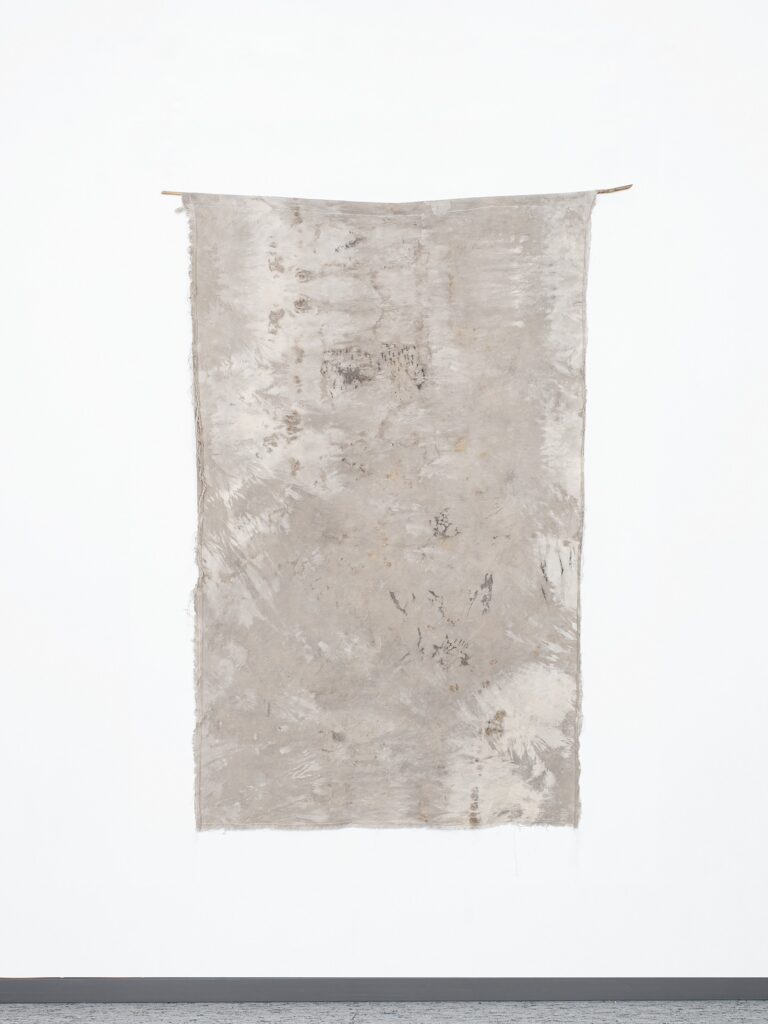
“By Bioregional, I mean that I’m working from natural sources from a specific place; now, I’m working with material from the Rogaland area, where I live. I use the Earth’s natural elements, like edible plants, wildflowers and seaweeds. I like to regenerate the old tradition of dyeing fabric, reconnect with nature, and significantly impact the environment.”
The work originates from the artist’s bond with textiles. Since she was a child, she was surrounded by her parents’ looms and extensive-size textiles in the family’s workshop. Instead, her interest in colours is linked to her working in the textile industry.
Experimentation with natural dyes responds to an allergic reaction caused by years of work with synthetic colours. Teresa’s approach is now less controlled and more open to experimentation, proceeding by trials and errors in a safer environment. “Natural tones are always unexpected”, she says.
The evolution of the “Mutable essence” process is documented in a journal, where she notes the investigations, extraction experiments, and the combination of colours and dyestuff.
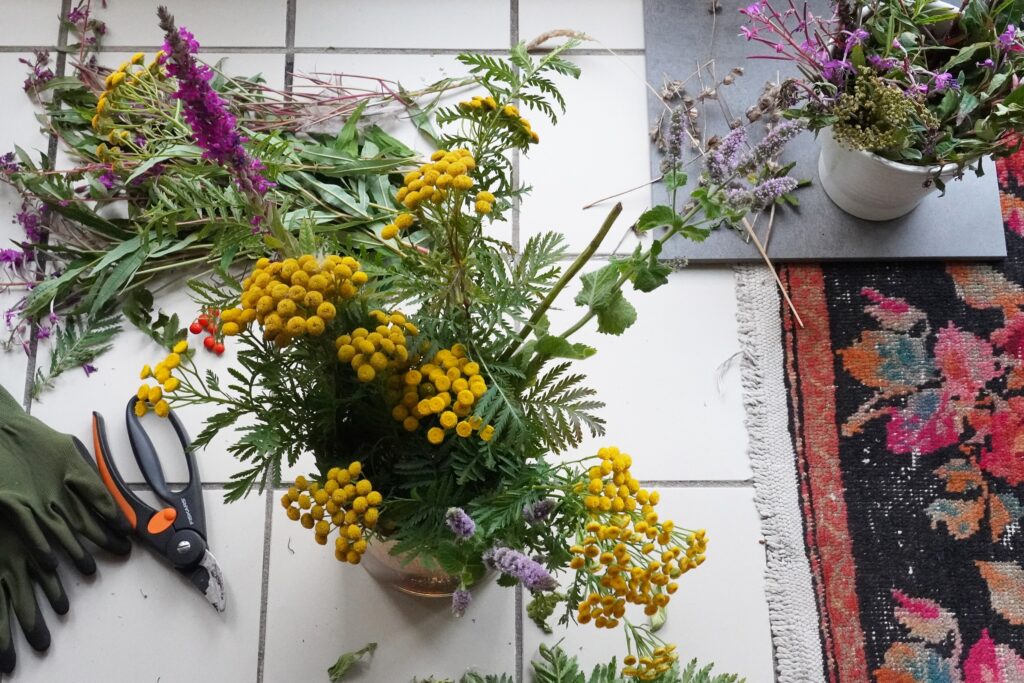
“Researching for my journal consists of harvesting, classifying and naming plants. A selection of plants will be used for dyeing, and the rest will be for preserving, drying and pressing. Collecting the plants and displaying them on a flat surface is like a representation of the geographical area. Again, mapping the space.”
Teresa’s pigments come from a variety of edible plants (avocado, onion, pomegranate and tea), wild plants (flowers and tree bark) and algae (kelp).
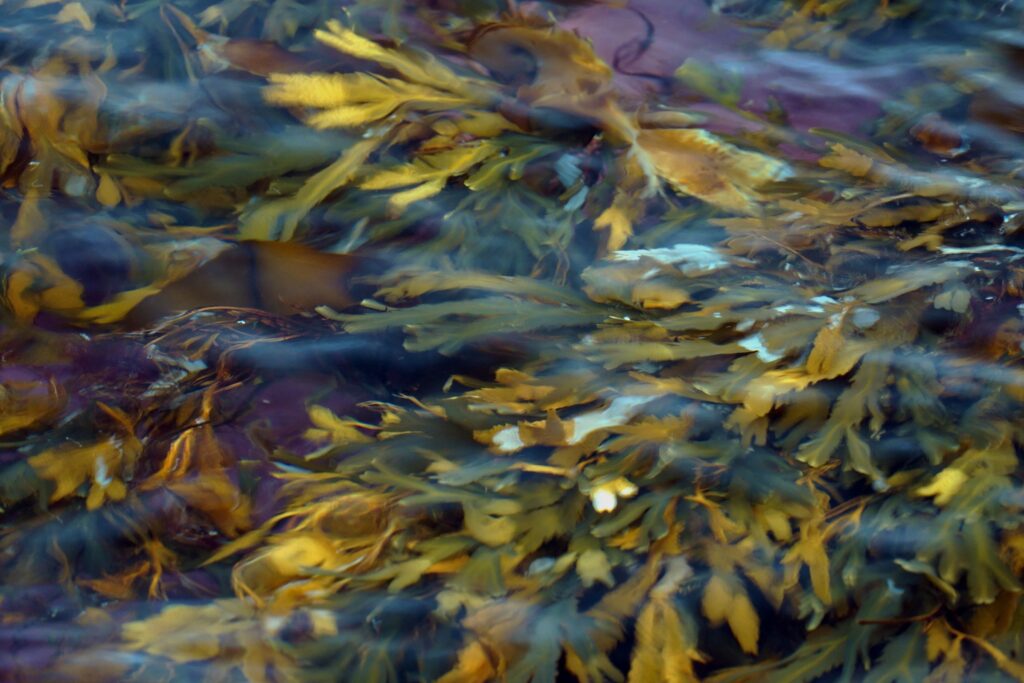
“I have samples of dyed fabric with algae, but the tone is very subtle. I have collected, filmed and photographed seaweeds; they provide me great energy by just looking at them.”
Collecting the raw material is like making a cartography of the area. The tones and shades from the result of the dyeing fibre show the essence of the organic elements in the landscape of the region, and somehow, it’s mirroring its cycle of life, which is in constant change, mutating and vanishing.”
The base of her works is cellulose fibres, usually cotton. The whole process, from mordanting to dyeing, is made from natural sources. The technique is alchemy itself and a synergy between handcrafts, environmental art, and traditional and contemporary craft.
“I don’t premeditate much about those pieces because I can’t even control the colour as the tones from nature are unexpected. I quite like the intuitive way of working on this project. When I got the first pieces finalised, I liked their delicate and subtle look; somehow, they echoed the fragile situation we’ve had these days around the world. I’m now introducing texture on the new ones; I’d like them to be heavier and wilder. Perhaps I feel they need to have more presence.”
The artist works with plants she collects. Part is dried and pressed, and the other is heated in a pot to get the colour. She experiments extensively with solar dyeing, where the fabric and plants are placed in a glass jar and left in a sunny spot; the sun is used as a heat source.
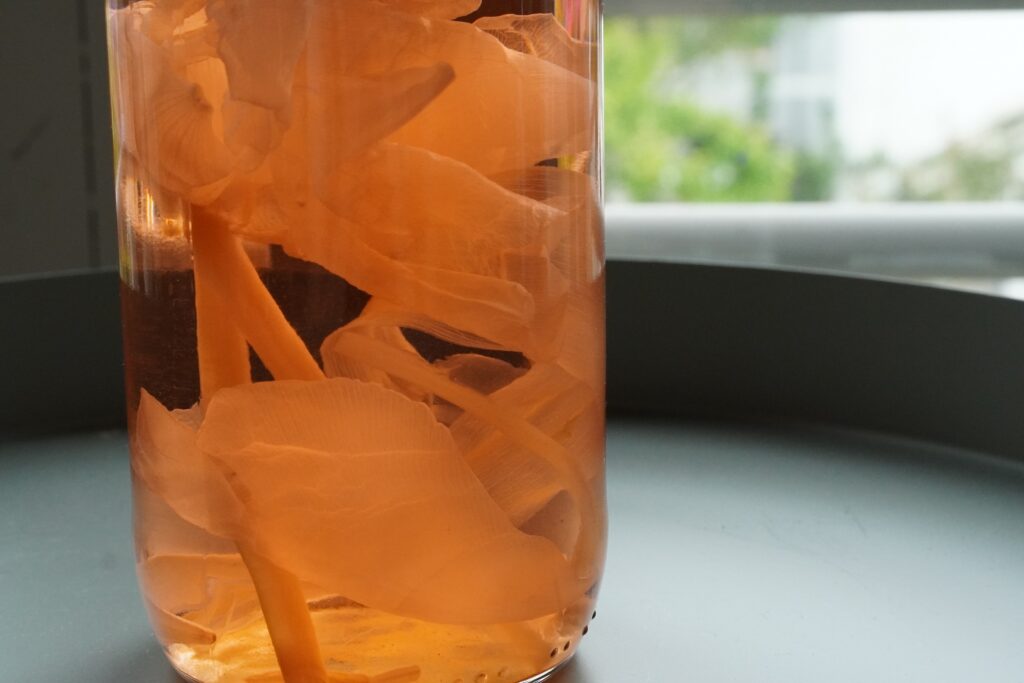
Mutable essence’s developments
Puig’s work with natural dyeing culminated in the 2023 exhibition Mutable Essence at Sølvberget Galleri in Stavanger, Norway, curated by Eli Glader. This exhibition showcased the artist’s exploration of color and transformation, with textiles suspended from iron structures. The textiles were treated and exposed to nature’s effects, submerged multiple times in dye baths, and layered with colors that reflected geological stratifications. The raw materials underwent a transformation process—soaking, drying, and revealing their inherent results. Like the flow of water, this process is constantly in flux, and the suspended textiles were arranged to represent a dynamic movement that embodies the ongoing transformation of the natural world. The exhibition’s concept highlights the interplay of space and movement, mirroring the cycles of change in nature.
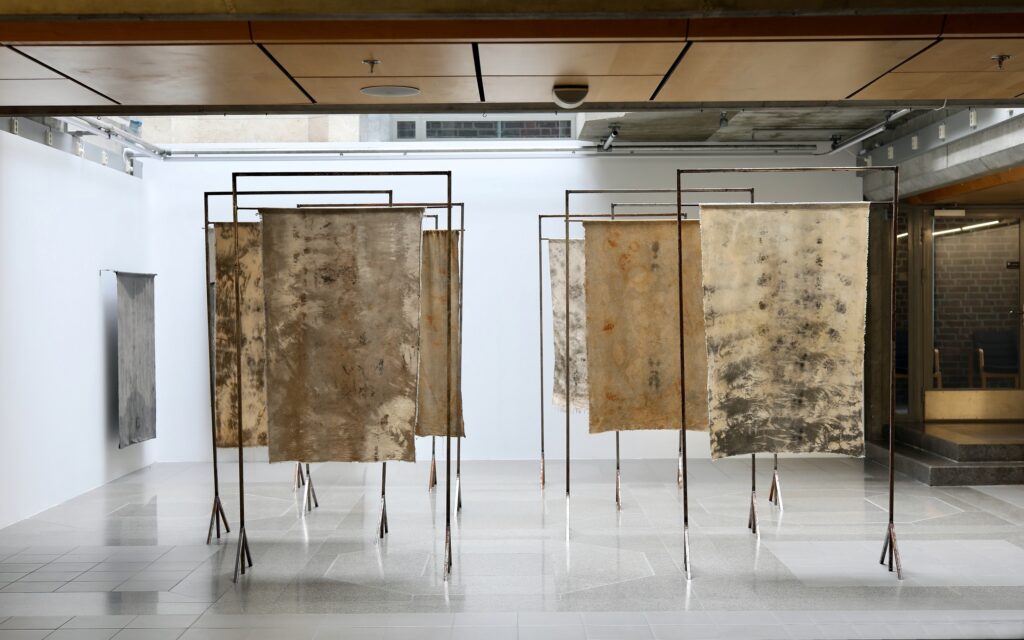
Fridas Hage
Another key exhibition, Fridas Hage, held at Frida Hansen Hus in Stavanger in 2022, paid tribute to the Norwegian textile artist Frida Hansen (1855–1935), whose innovative weaving designs had been overlooked for much of her life. Puig’s project involved using the same natural dyeing techniques that Hansen had once used, extracting colors from the plants in her garden. The expressive nature of the textiles, designed with an emphasis on plant motifs and natural colors, echoes Hansen’s work while also pushing the boundaries of traditional textile practices. The plants used in the project were harvested for several months, from spring to summer 2022, and some textiles were dyed multiple times to achieve the desired tones.
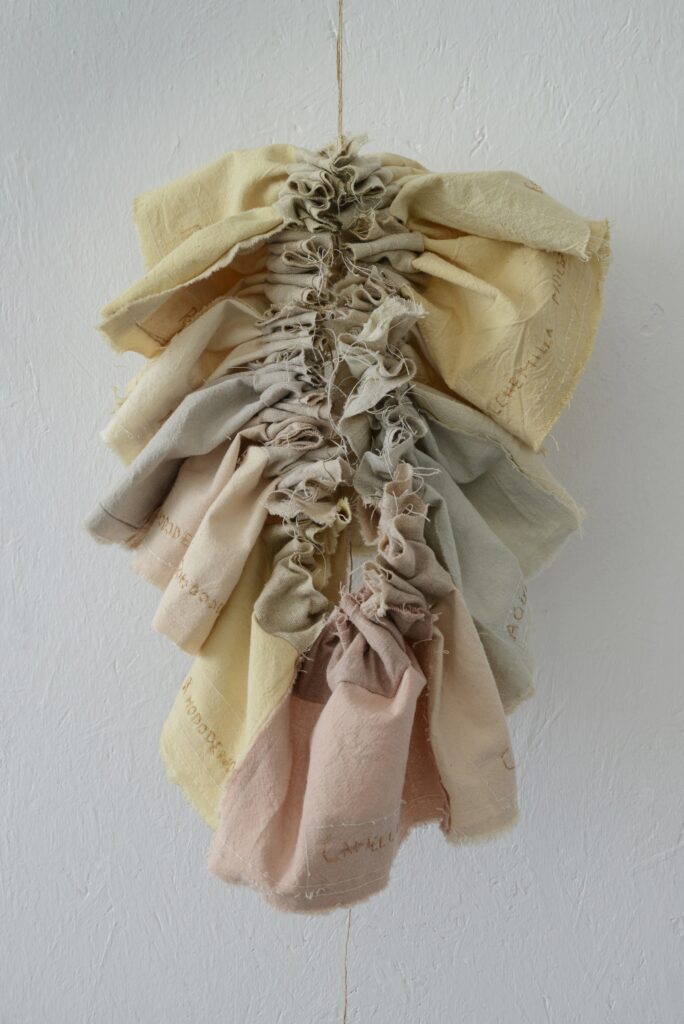
Fragments de Ratafia and Collaborations
Puig’s recent collaborations further highlight the intertwining of art, nature, and culture. In the 2023 project Fragments de Ratafia, Puig worked alongside ethnobotanist Anna Selga to create a textile piece dyed using plants harvested from the natural park Les Guilleries in Girona. The plants, used in creating the traditional Catalonian liquor Ratafia, were harvested for their medicinal properties and ability to yield natural dyes. The result is a large textile piece made from 56 different plants, accompanied by an herbarium that documents each plant’s color and properties. This collaboration allowed Puig to explore the relationship between color, culture, and tradition, creating an immersive and educational experience highlighting the importance of preserving both botanical knowledge and artistic heritage.
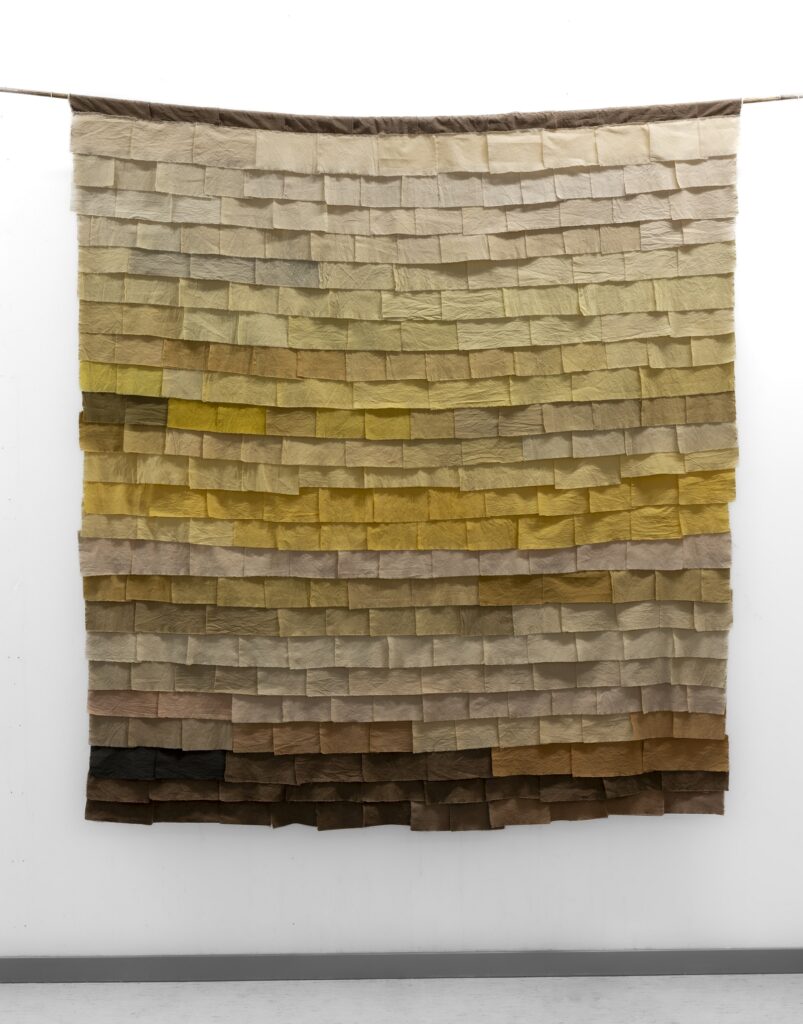
A Constantly Evolving Practice
Puig’s connection to nature and her evolving practice of natural dyeing continues to grow. She is currently working on a new exhibition in Lisbon, Portugal, which will focus on the forests of Norway. For this project, Puig plans to extract natural dyes from various parts of trees, further deepening her exploration of the interconnectedness of humans, trees, and the land.
Teresa Puig’s Mutable Essence and its subsequent exhibitions represent more than just the use of natural dyes—they are a meditation on the cycles of life, the fragility of the environment, and the possibility of regeneration through traditional craftsmanship. Each project is an ongoing exploration of the intersections between space, time, and nature. Through her use of natural materials, Puig reminds us of the deep connections between human beings and the land they inhabit. Her work is an artistic expression and a form of environmental activism, using the language of art to draw attention to the fragility and beauty of the world around us.
